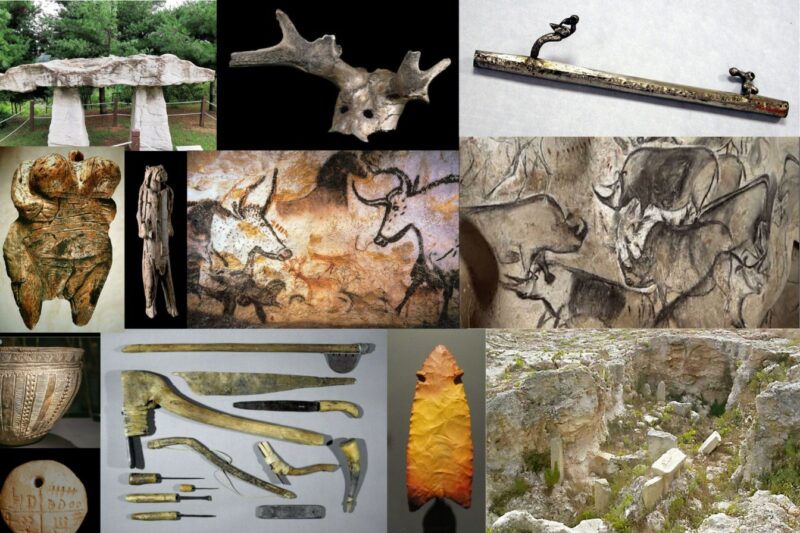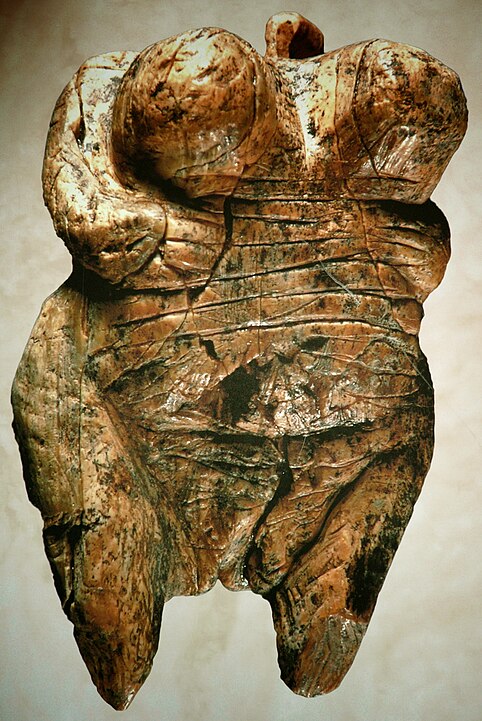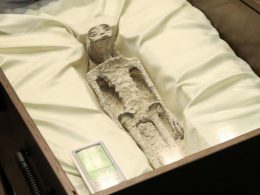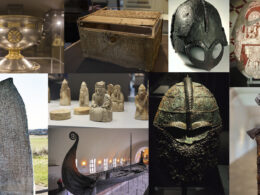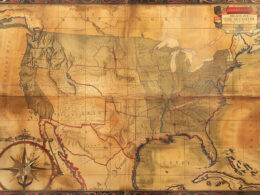The Stone Age, a time of profound human innovation and adaptation, marked the earliest chapters of our collective history. It is an era defined by the ingenious artifacts that have survived the ravages of time, revealing the remarkable abilities of our ancient ancestors.
In this article, we embark on a captivating journey through the annals of prehistoric times, as we unveil the Top artifacts from the Stone Age. From the rudimentary yet effective tools of the Lower Paleolithic to the intricate artistry and craftsmanship of the Neolithic period, these artifacts offer a fascinating glimpse into the ingenuity, culture, and evolution of early human civilizations.
1. Handaxes
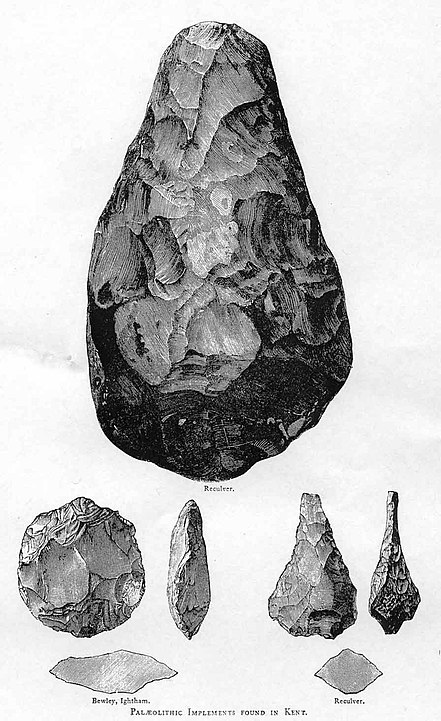
Age: Lower Paleolithic, dating back to about 1.7 million years ago.
Handaxes are iconic Stone Age tools known for their teardrop or almond shape. Crafted with a symmetrical design, they served as multipurpose tools for early humans, used for cutting, chopping, and even as weapons. Their existence across a wide geographical range suggests the transmission of knowledge and skills within ancient human communities.
2. Clovis Tools
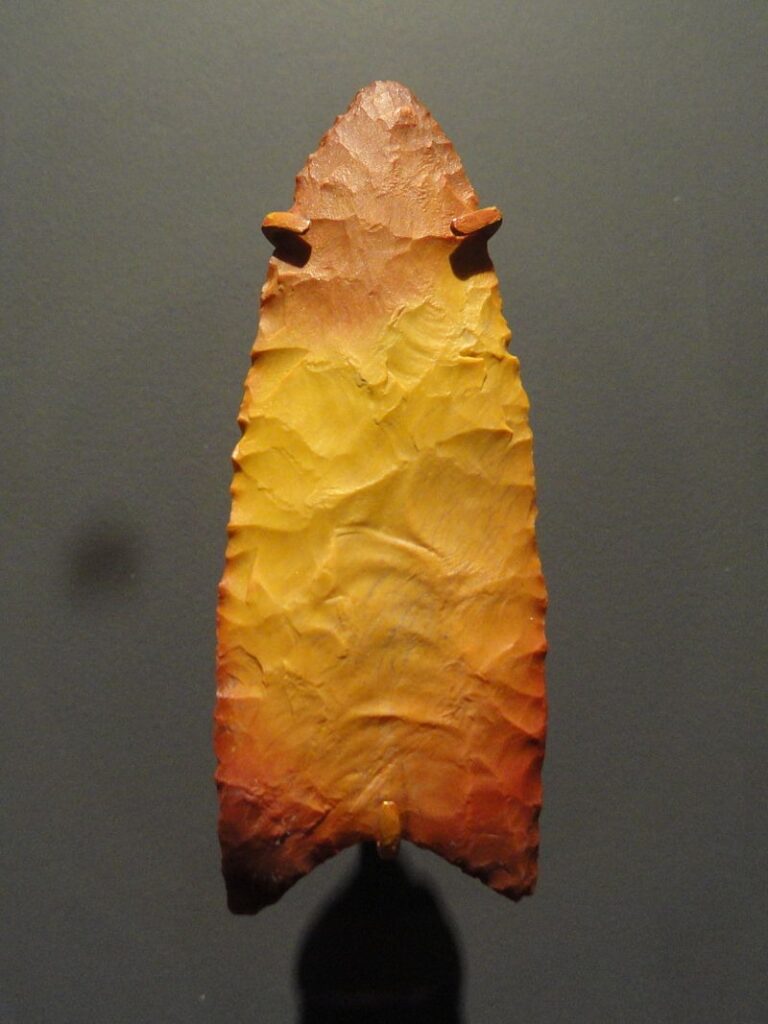
Age: Associated with the Clovis culture during the Paleo-Indian period, around 13,000 years ago.
Clovis tools, particularly Clovis points, are among the most famous artifacts from early North American indigenous cultures. These finely crafted stone tools were used for hunting megafauna like mammoths and mastodons. Their elegant design, featuring a flute running along the center of the point, showcases the exceptional craftsmanship of early Native American cultures.
3. Cave Paintings
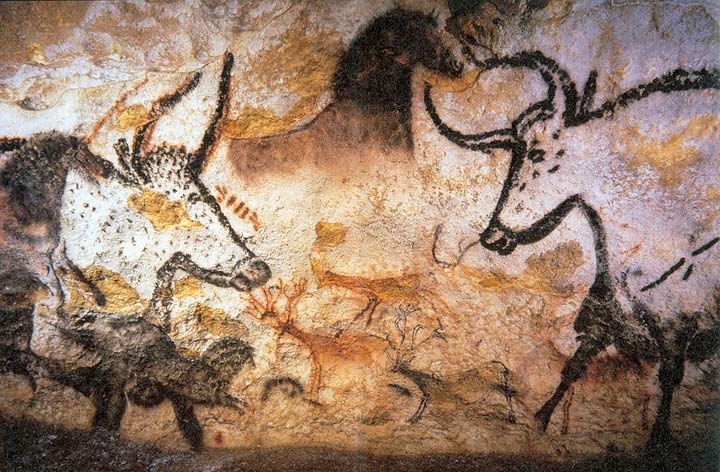
Age: Paleolithic period, ranging from about 40,000 to 14,000 years ago.
Some of the most captivating Stone Age artifacts are the intricate cave paintings found in locations like Lascaux in France and Altamira in Spain. These ancient artworks provide a window into the lives and beliefs of our prehistoric ancestors. Painted on the cave walls, they depict animals, hunters, and rituals, and their vividness and detail continue to astound researchers and art enthusiasts alike.
4. Venus Figurines
Age: Predominantly from the Upper Paleolithic, around 30,000 to 10,000 years ago.
Venus figurines are small, often voluptuous female figurines carved from various materials, such as stone, ivory, and clay. These figurines are thought to represent fertility and possibly had spiritual or religious significance. Their prevalence across Europe and Asia suggests common cultural themes during this period.
5. Atlatl Spear Throwers
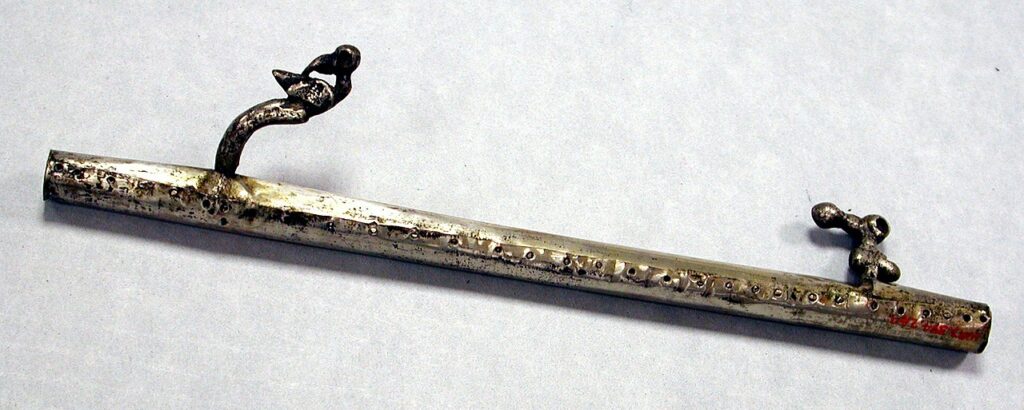
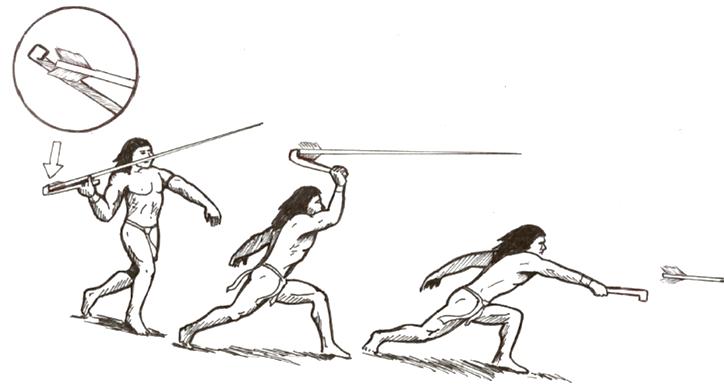
Age: Used in various periods of the Stone Age.
Atlatl spear throwers are an ingenious tool used to increase the range and force of a thrown spear or dart. They consist of a handle with a hook that grasps the back of the spear, effectively lengthening the arm of the thrower. This innovation allowed our ancestors to hunt and defend themselves more effectively, marking a significant development in weaponry and hunting technology.
6. Stone Adzes
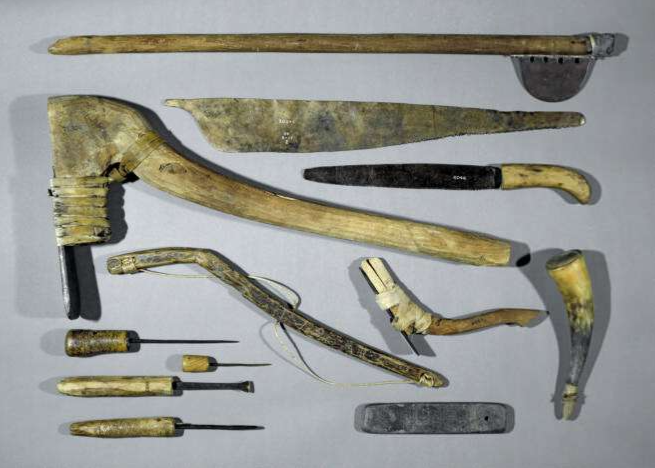
Age: Used throughout the Stone Age, with variations over time.
Stone adzes were versatile tools used for cutting and shaping wood, making them essential for crafting shelters, boats, and other wooden objects. These artifacts demonstrate the ingenuity of Stone Age people in adapting natural materials to suit their needs.
7. Chauvet-Pont-d’Arc Cave Art
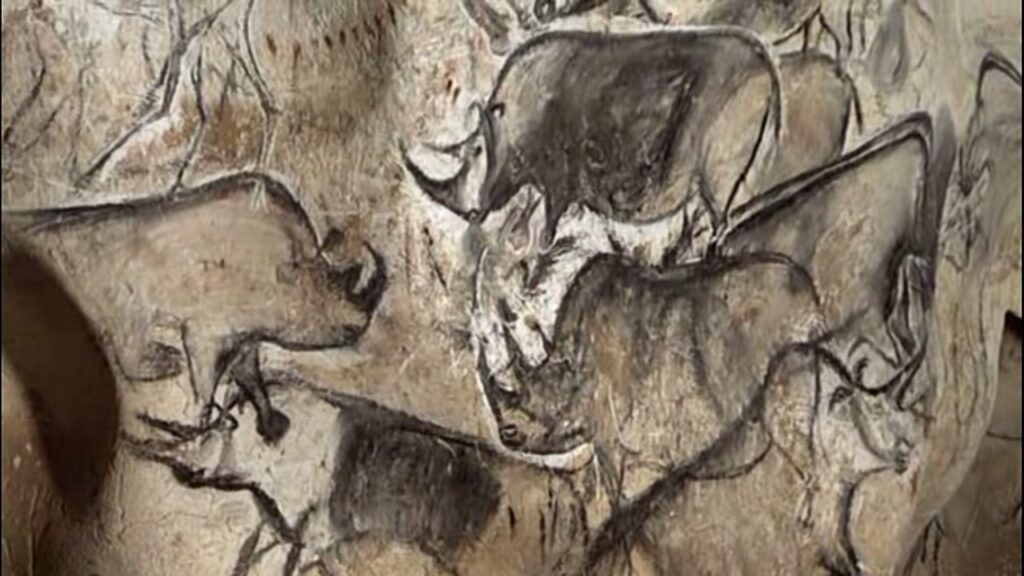
Age: Predominantly from the Paleolithic period, approximately 36,000 years ago.
The Chauvet-Pont-d’Arc cave in France is renowned for its stunning prehistoric artwork. The cave’s walls are adorned with intricate depictions of animals, including mammoths, lions, and rhinoceroses. The exquisite detail and quality of this art offer a rare glimpse into the artistic prowess of our ancient ancestors.
8. Ötzi the Iceman’s Tools
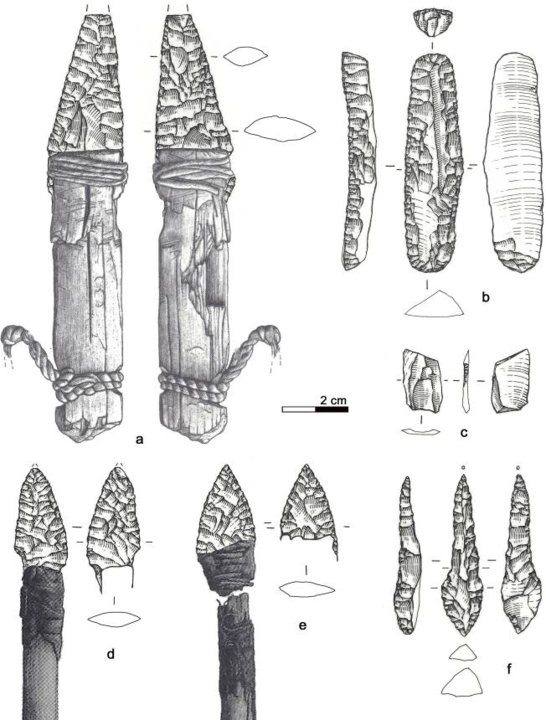
Age: Dating back to around 3,300 BCE (Copper Age/Neolithic).
Ötzi, the well-preserved mummy discovered in the Alps, offers a unique window into the life of an ancient individual. Alongside Ötzi, his tools and clothing were remarkably preserved, providing insights into his daily life. These artifacts include a copper axe, clothing made of various materials, and a quiver with arrows, shedding light on the technology and skills of the Neolithic period.
9. Stone Henges
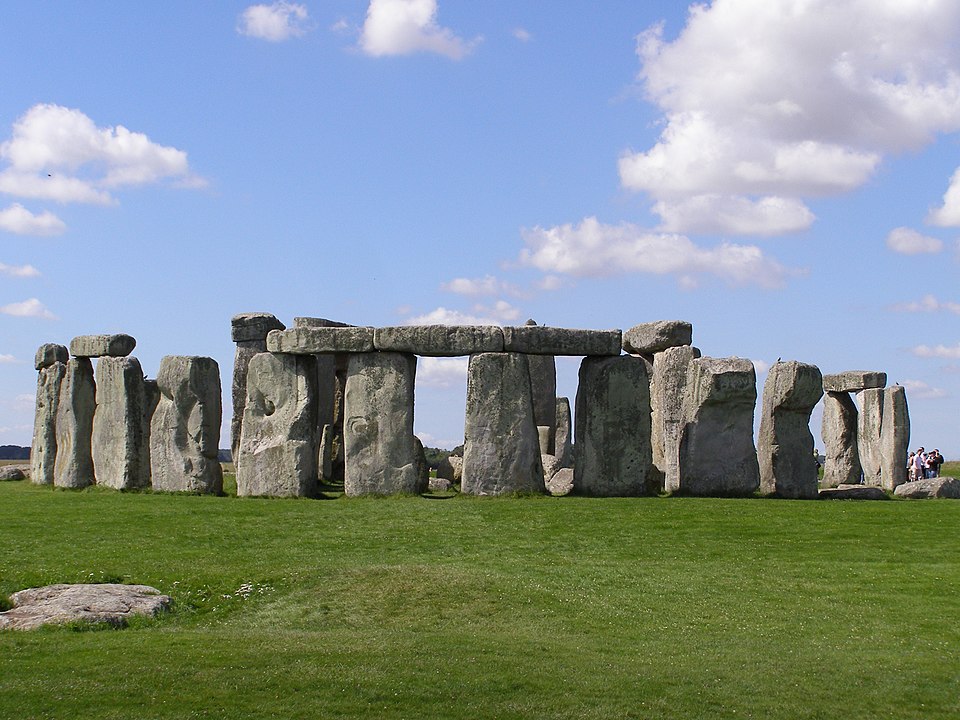
Age: Primarily constructed during the Neolithic period, around 2,500 to 2,000 BCE.
Stone Henge, one of the world’s most famous megalithic monuments, is located in England. Comprising massive stone monoliths arranged in circular patterns, these henges are believed to have had religious or astronomical significance. The construction of such colossal stone monuments without modern machinery remains a testament to the engineering prowess of Stone Age communities.
10. Stone Age Pottery
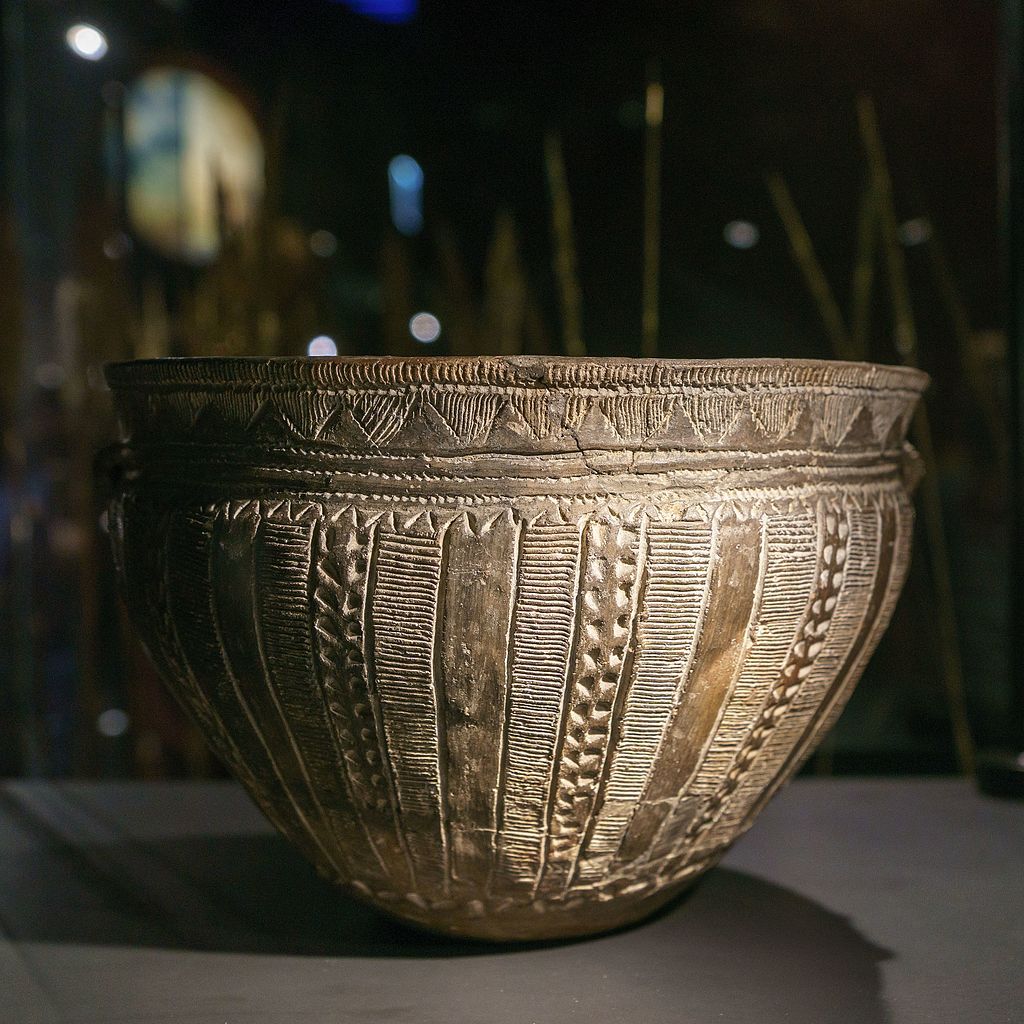
Age: Pottery production evolved over time, starting in the Neolithic period.
The advent of pottery marked a significant development in the history of human technology. Early pottery from the Stone Age served various purposes, from cooking and storage to ritual and trade. The craft of pottery-making played a crucial role in the development of settled communities.
11. Dolmens
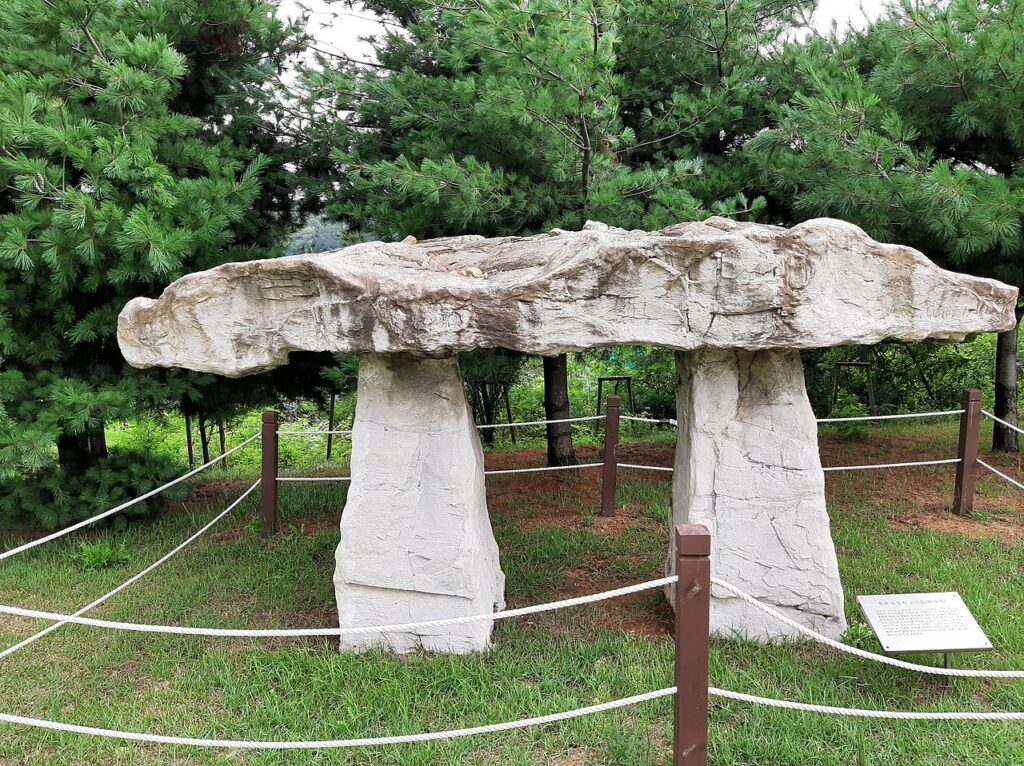
Age: Predominantly from the Neolithic period but found in various cultures and time periods.
Dolmens are ancient megalithic structures consisting of large stone slabs, often used for burial chambers or as religious sites. These impressive stone constructions, found in diverse parts of the world, reflect the importance of communal and spiritual practices during the Stone Age.
12. The Lion Man
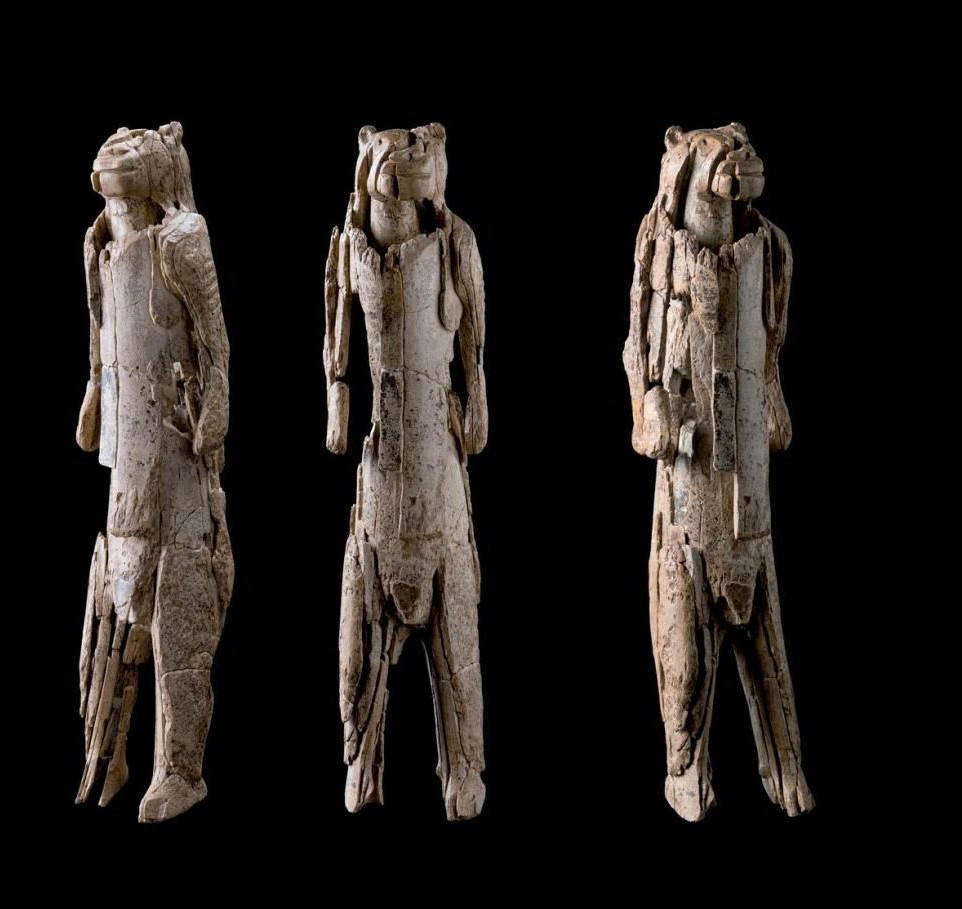
Age: Created during the Upper Paleolithic period, approximately 40,000 years ago.
The Lion Man, or Löwenmensch, is a remarkable artifact made from mammoth ivory. This intricately carved figurine represents a humanoid with the head of a lion or big cat. It’s one of the earliest known examples of figurative art and showcases the artistic capabilities of Stone Age people, as well as possibly hinting at their spiritual or mythological beliefs.
13. Star Carr Headdresses
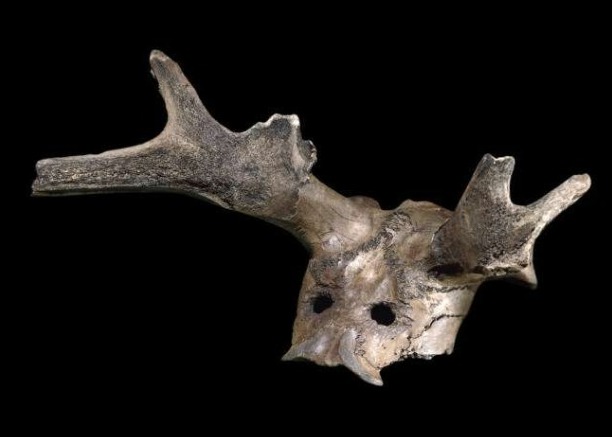
Age: From the Mesolithic period, approximately 9,000 years ago.
Star Carr, a Mesolithic archaeological site in the UK, yielded some unique artifacts, including headdresses made of red deer skulls. These headdresses are believed to have been used in rituals, demonstrating the importance of ceremonial practices in Stone Age cultures.
14. Skara Brae
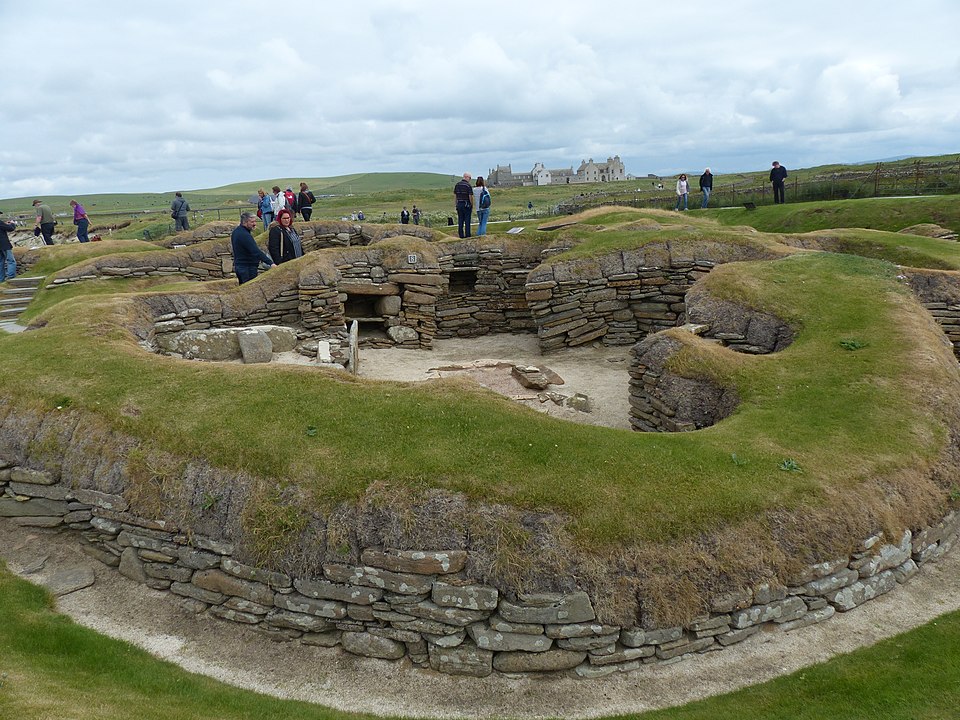
Age: Neolithic period, around 3,200 BCE.
Skara Brae is a remarkably well-preserved Neolithic village on the Orkney Islands of Scotland. The stone structures of this settlement provide insights into how people lived during this era, with stone-built houses, furniture, and tools. The layout of Skara Brae is a testament to early urban planning and communal living.
15. Stone Age Jewelry
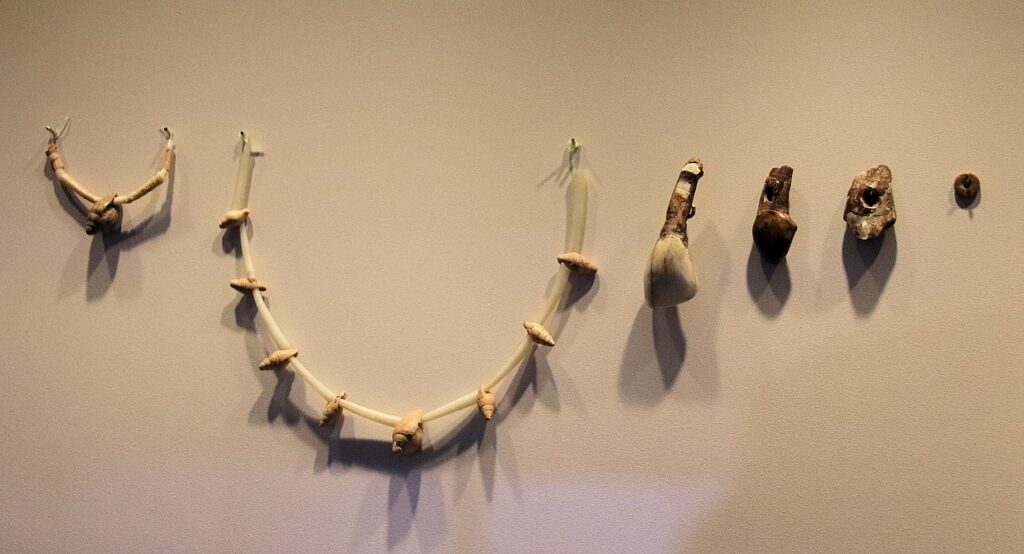
Age: Created and used throughout the Stone Age.
Stone Age jewelry includes beads, pendants, and other adornments made from materials such as bone, shell, and stone. These items served not only as personal ornamentation but also as symbols of status, trade, and possibly spiritual significance. They provide a glimpse into the aesthetic and symbolic values of ancient cultures.
16. Stone Age Canoes
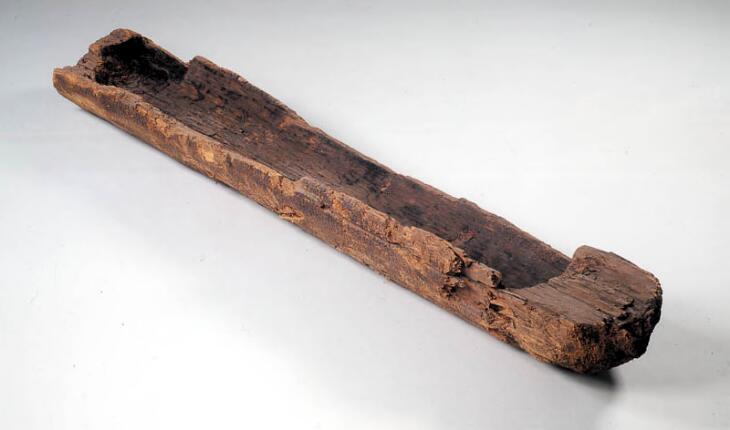
Age: Developed during various periods of the Stone Age.
Stone Age canoes were primitive watercraft constructed from hollowed-out logs. These early boats played a vital role in fishing, transportation, and exploration. Their development represents a leap forward in human mobility and resource utilization.
17. Tumuli
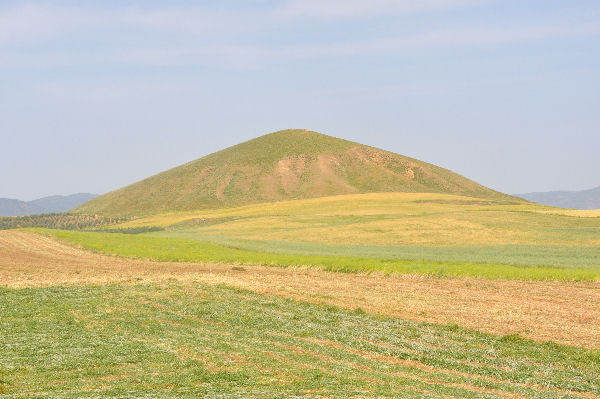
Age: Primarily associated with the Neolithic and Bronze Age, spanning several millennia.
Tumuli, also known as burial mounds or barrows, are artificial hills constructed to house the remains of the deceased. These monuments were created during various periods of prehistory and are found in different parts of the world. Tumuli offer insights into the burial practices and social structures of ancient societies.
18. Rock Art of Alta
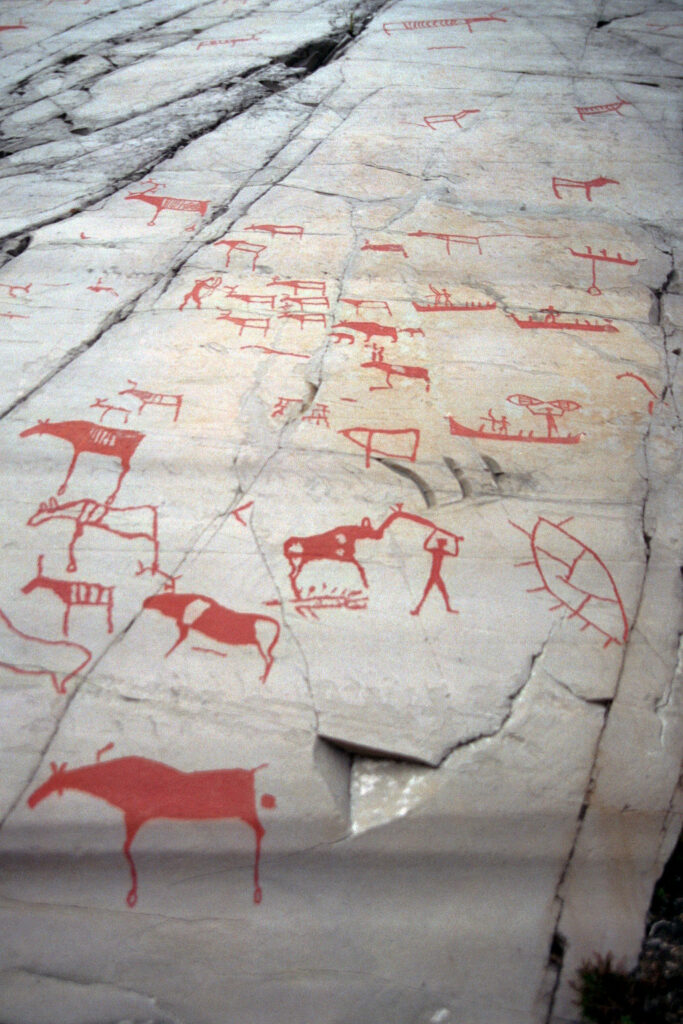
Age: Predominantly from the Neolithic and Bronze Age, dating back thousands of years.
The Rock Art of Alta, located in Norway, is a UNESCO World Heritage Site renowned for its petroglyphs, which are carvings and paintings on rock surfaces. These depictions of animals, scenes, and symbols provide valuable glimpses into the spiritual beliefs and daily life of ancient people in the region.
19. Mehrgarh Pottery
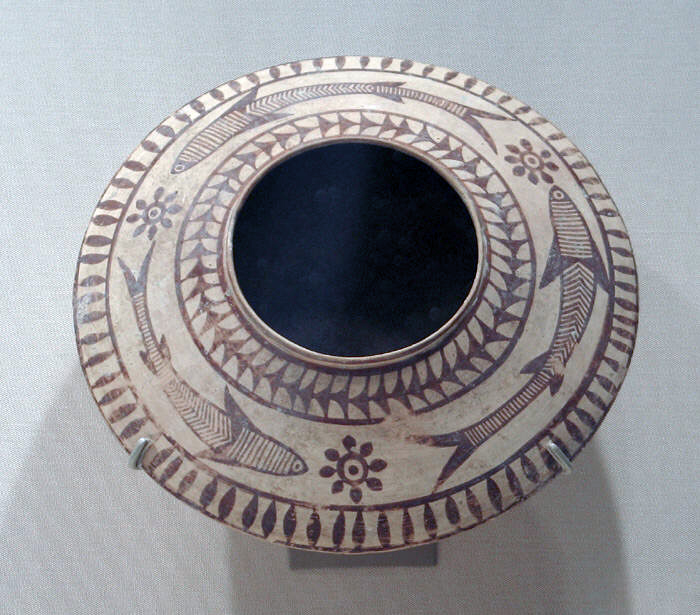
Age: Neolithic period, around 7,000 BCE.
Mehrgarh, in present-day Pakistan, is an archaeological site where some of the earliest examples of pottery were discovered. These pots and containers represent a significant step in the development of ceramic technology and indicate the shift from a hunter-gatherer lifestyle to settled agriculture.
20. Tărtăria Tablets
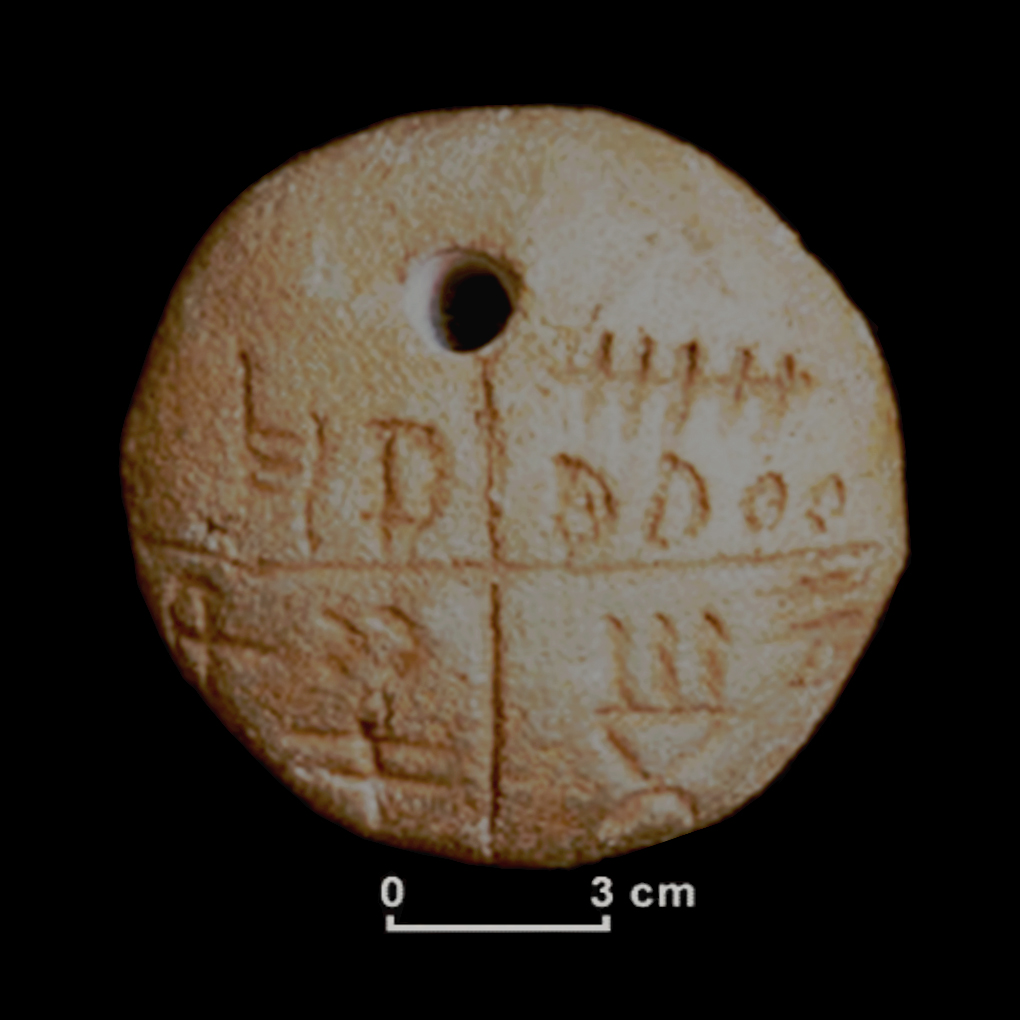
Age: From the Vinča-Turdaş culture during the Neolithic period, approximately 5,300 BCE.
The Tărtăria Tablets are a set of three clay tablets found in Romania, bearing some of the earliest known examples of writing. These symbols raise questions about the development of written language and record-keeping in ancient European cultures.
21. Xaghra Stone Circle
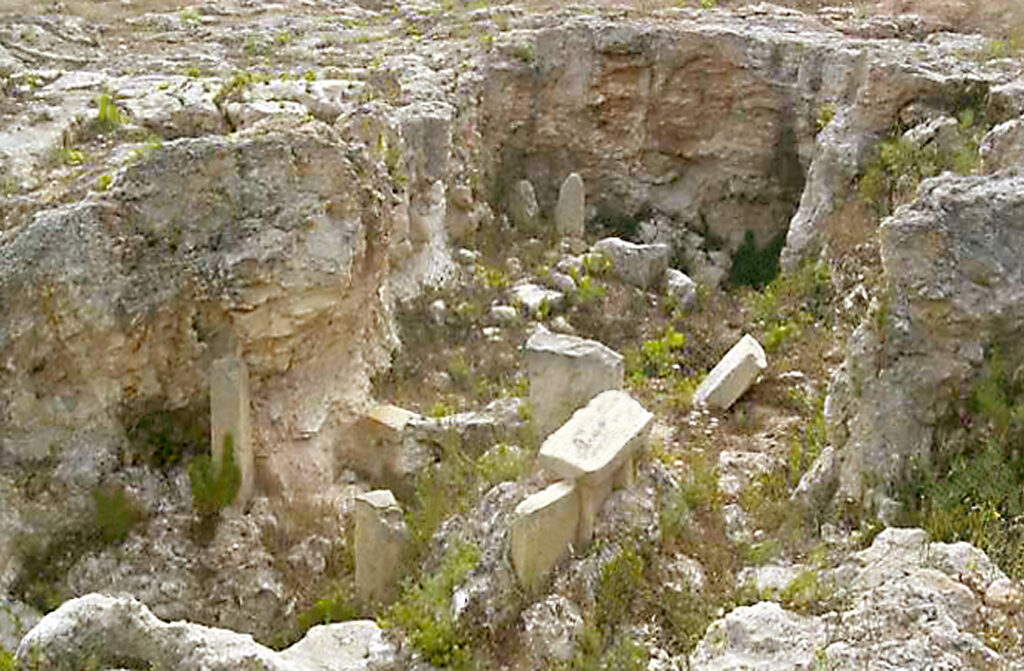
Age: Neolithic period, around 3,600 BCE.
The Xaghra Stone Circle is a megalithic structure located in Malta. It consists of upright limestone megaliths arranged in a circular pattern. These stone circles are believed to have had ritual, astronomical, or religious significance, offering insight into the spiritual practices of Neolithic societies on the island.
22. Los Millares
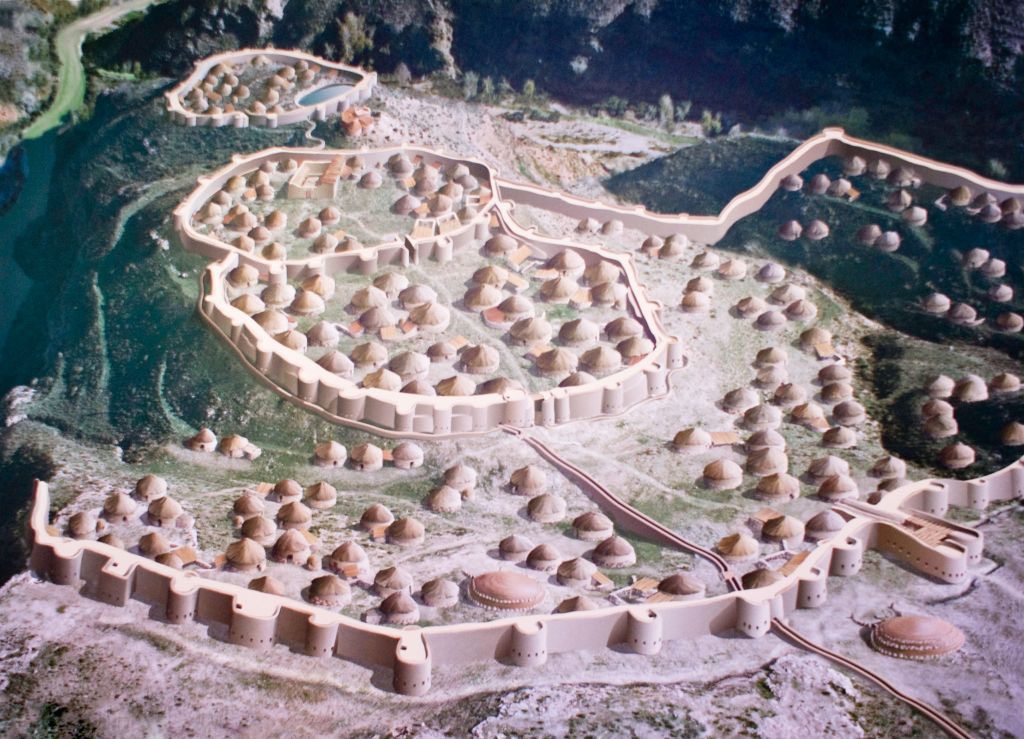
Age: Copper Age, around 3,500 BCE.
Los Millares is a fortified Neolithic and Copper Age settlement located in Spain. This complex site includes stone walls, towers, and a sophisticated water management system. It provides valuable information about the social organization and defense strategies of ancient European societies.
Conclusion
These remarkable relics have transported us back in time, shedding light on the ingenuity, creativity, and adaptability of our ancient ancestors.
From the rudimentary but effective Olduvai Gorge Tools to the intricate and awe-inspiring Chauvet-Pont-d’Arc Cave Art, these artifacts have offered glimpses into the daily lives, spiritual beliefs, and technological achievements of Stone Age cultures across the globe. They represent the foundational building blocks of human civilization and stand as enduring testaments to our enduring legacy.
As we reflect on these artifacts, we’re reminded of the profound connections that bridge the chasm of time, linking us to those who crafted and used these tools, created awe-inspiring art, and left their indelible marks on history.
In the face of these ancient treasures, we are reminded of the continuum of human history, where the echoes of the Stone Age still resonate, shaping our world today.
**Please note that this post may contain affiliate links. When booking through one of our links, we earn a small kickback at no extra cost to you and it’s a big help to keep the site up and running.





